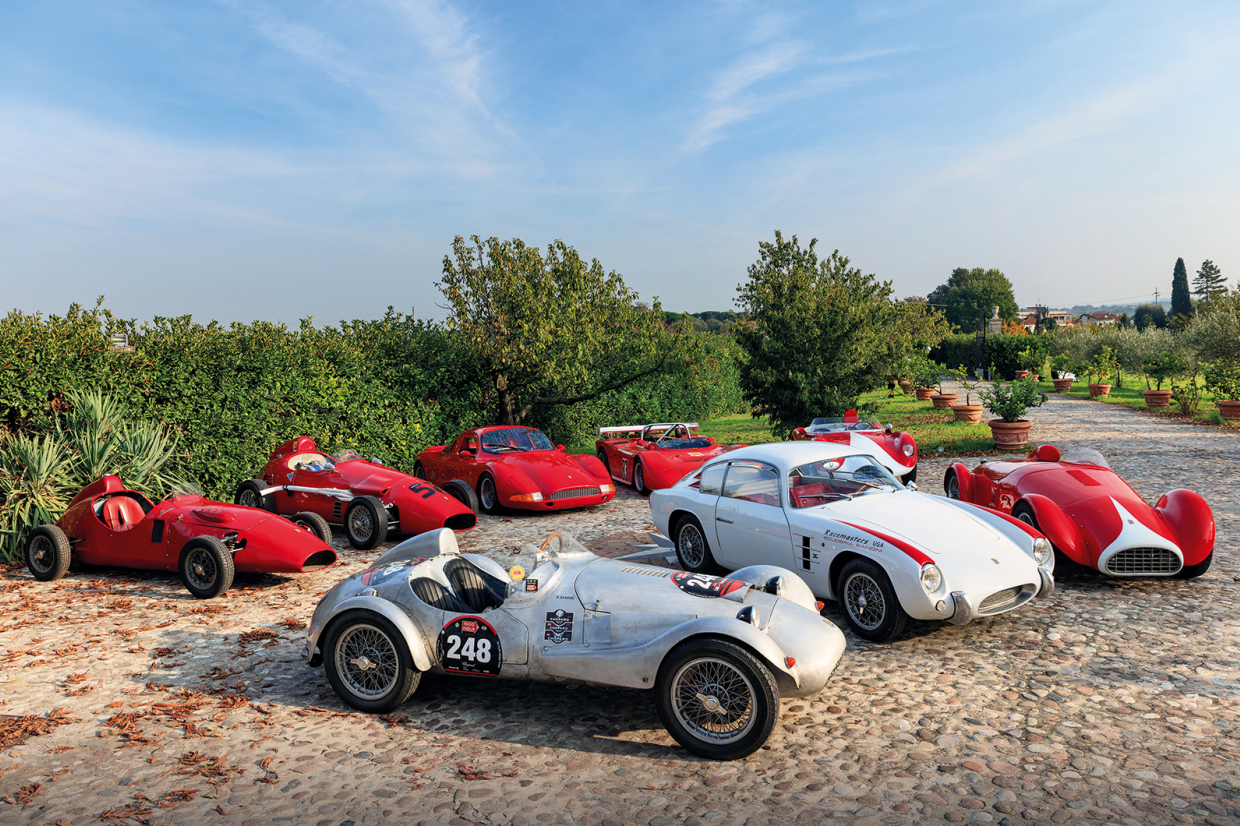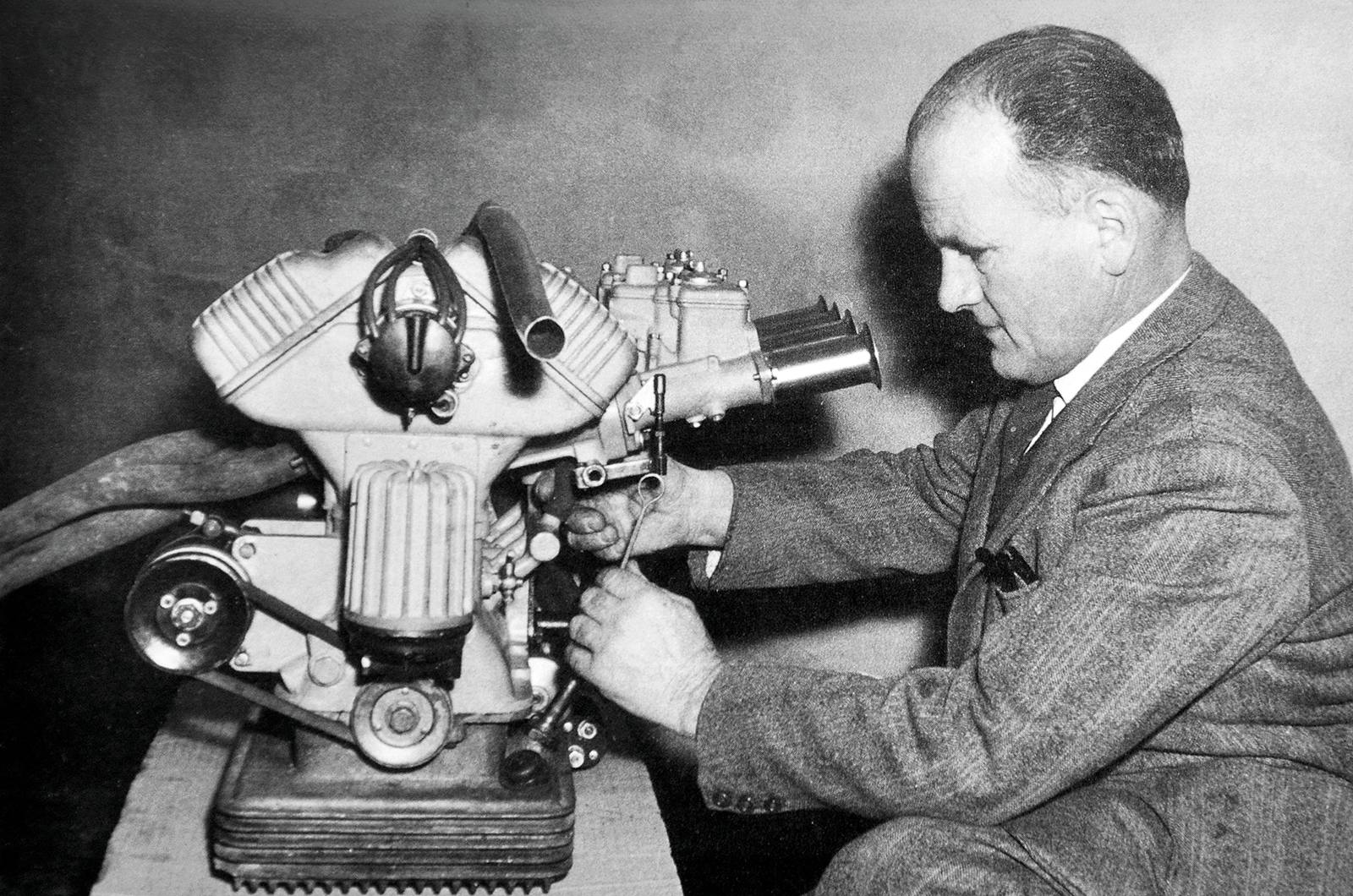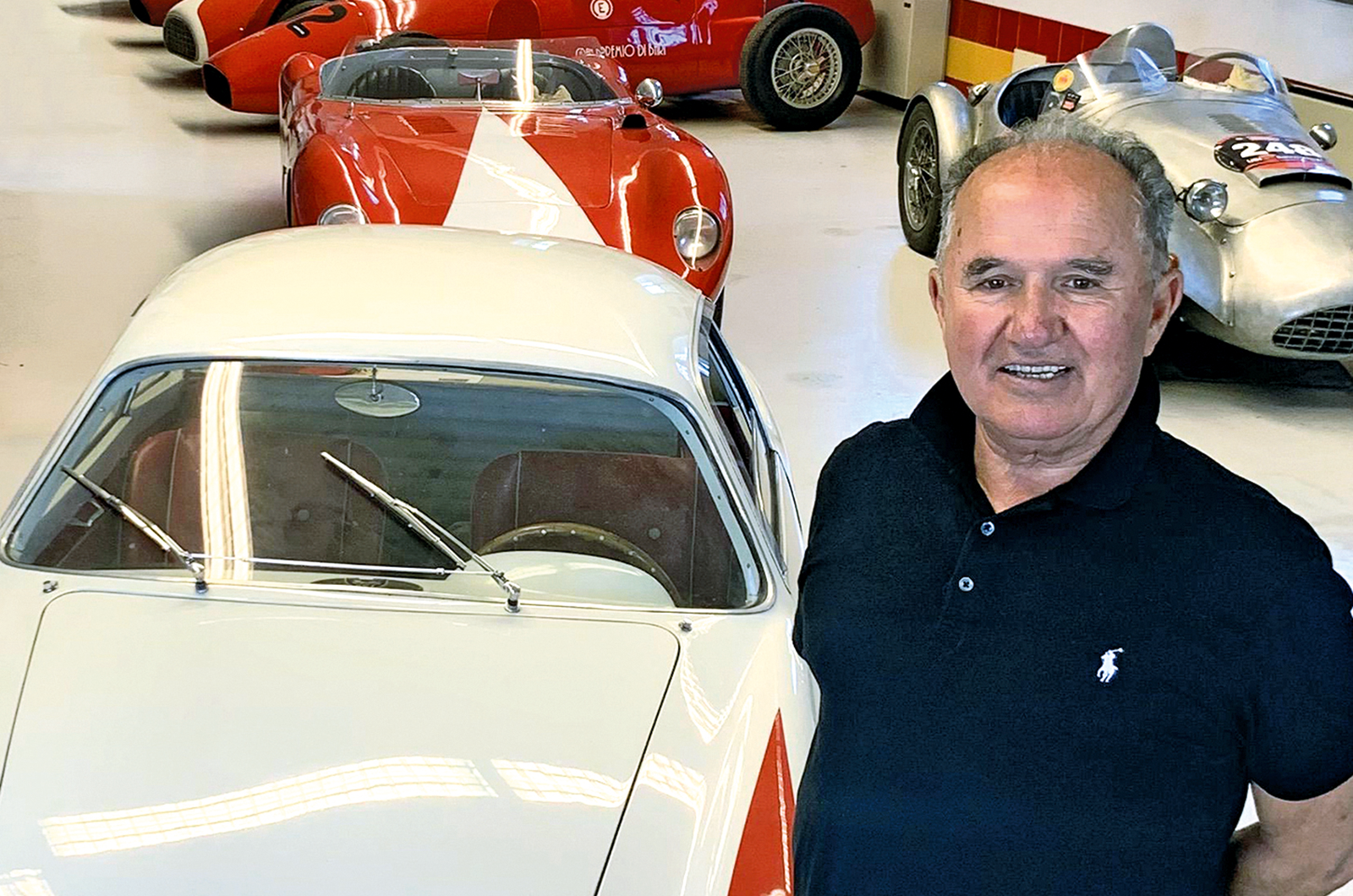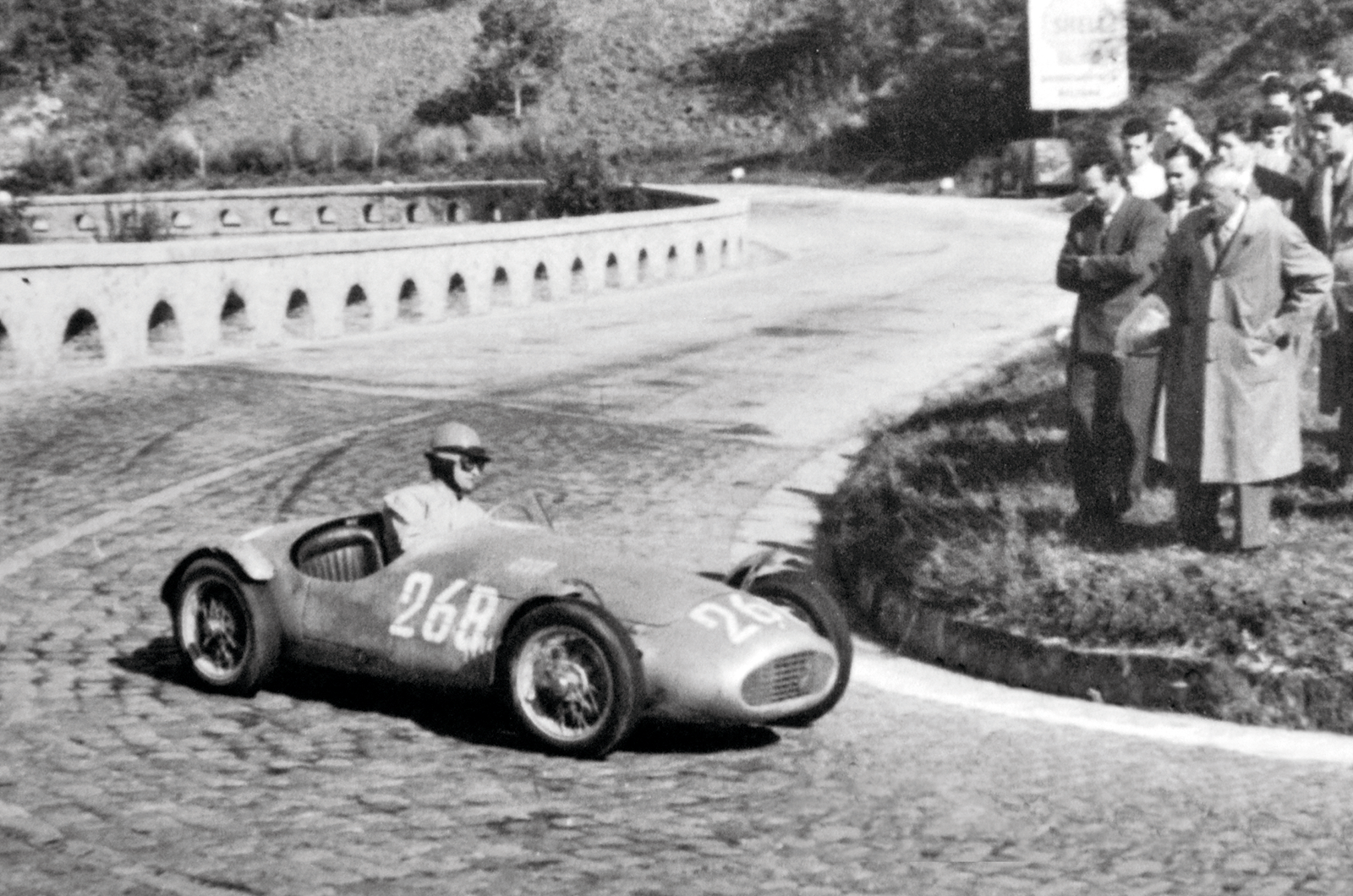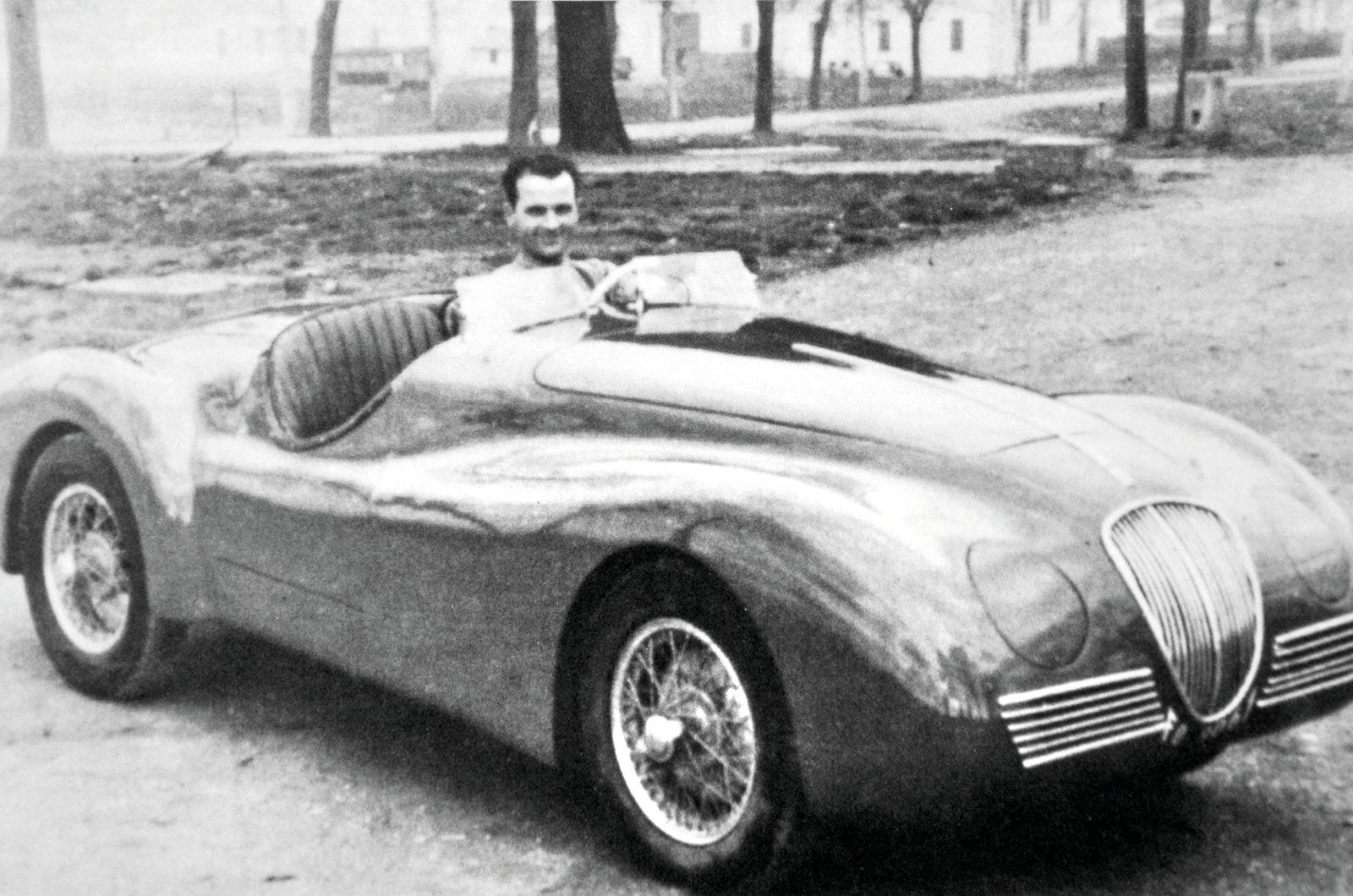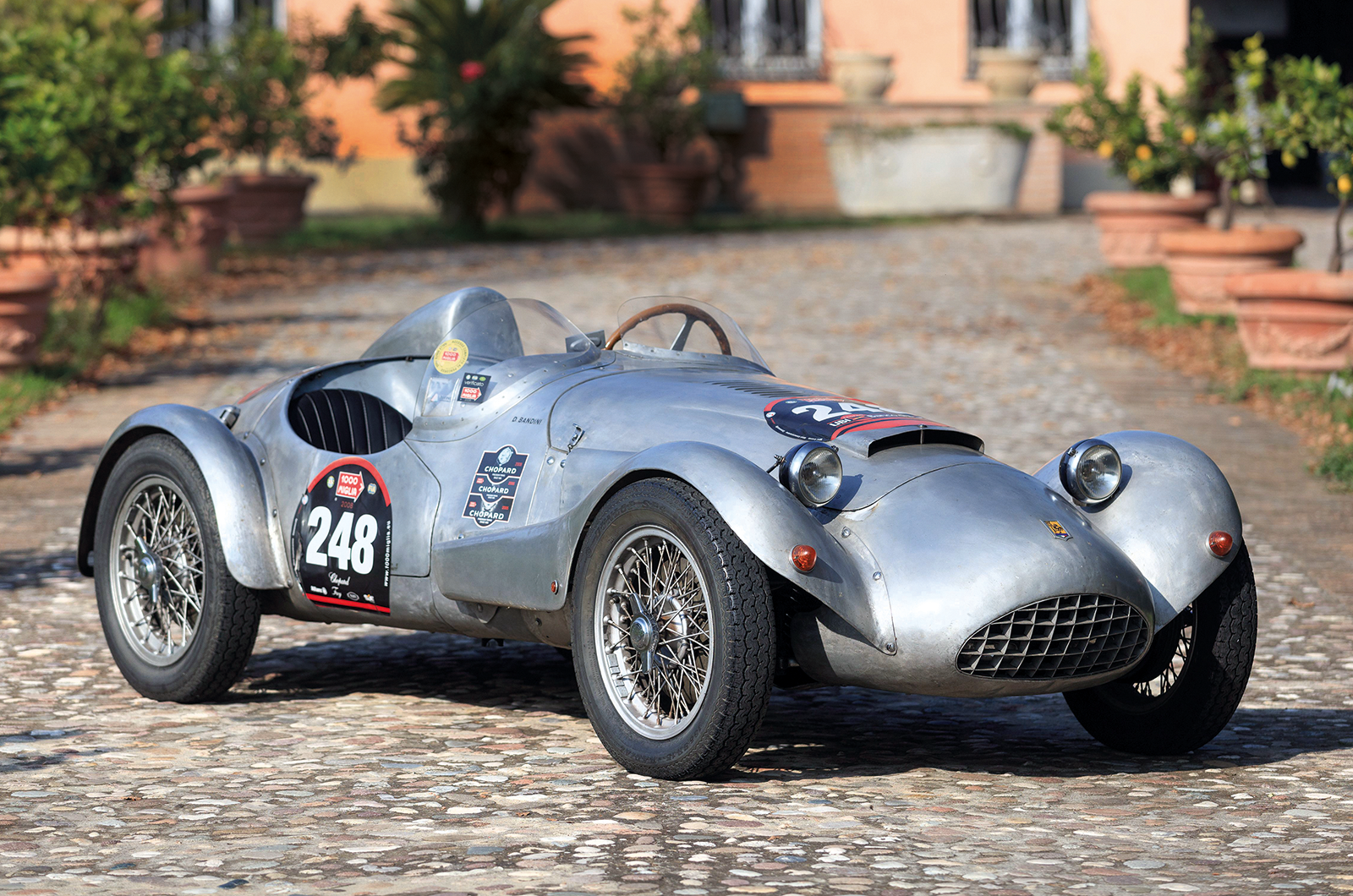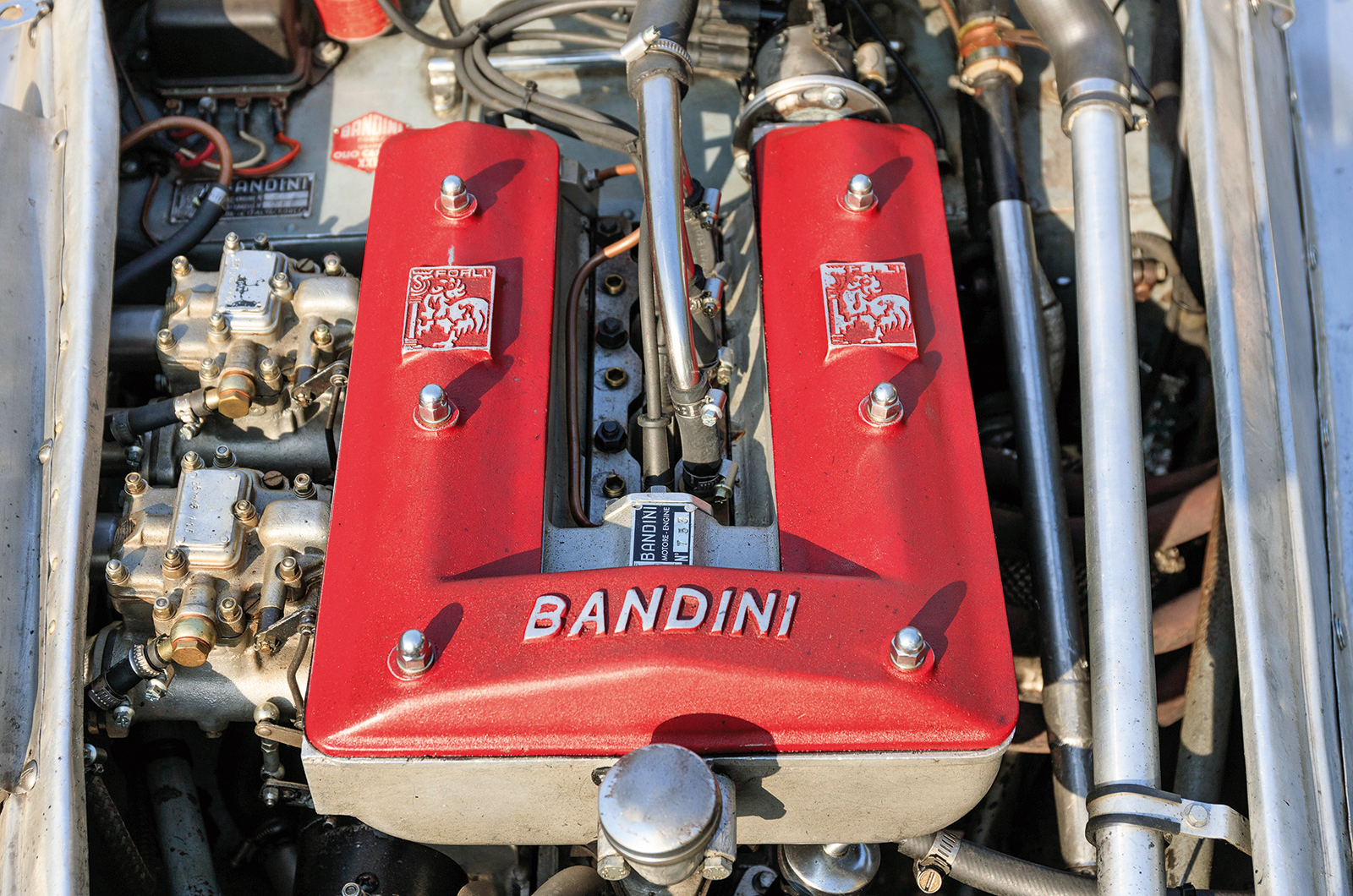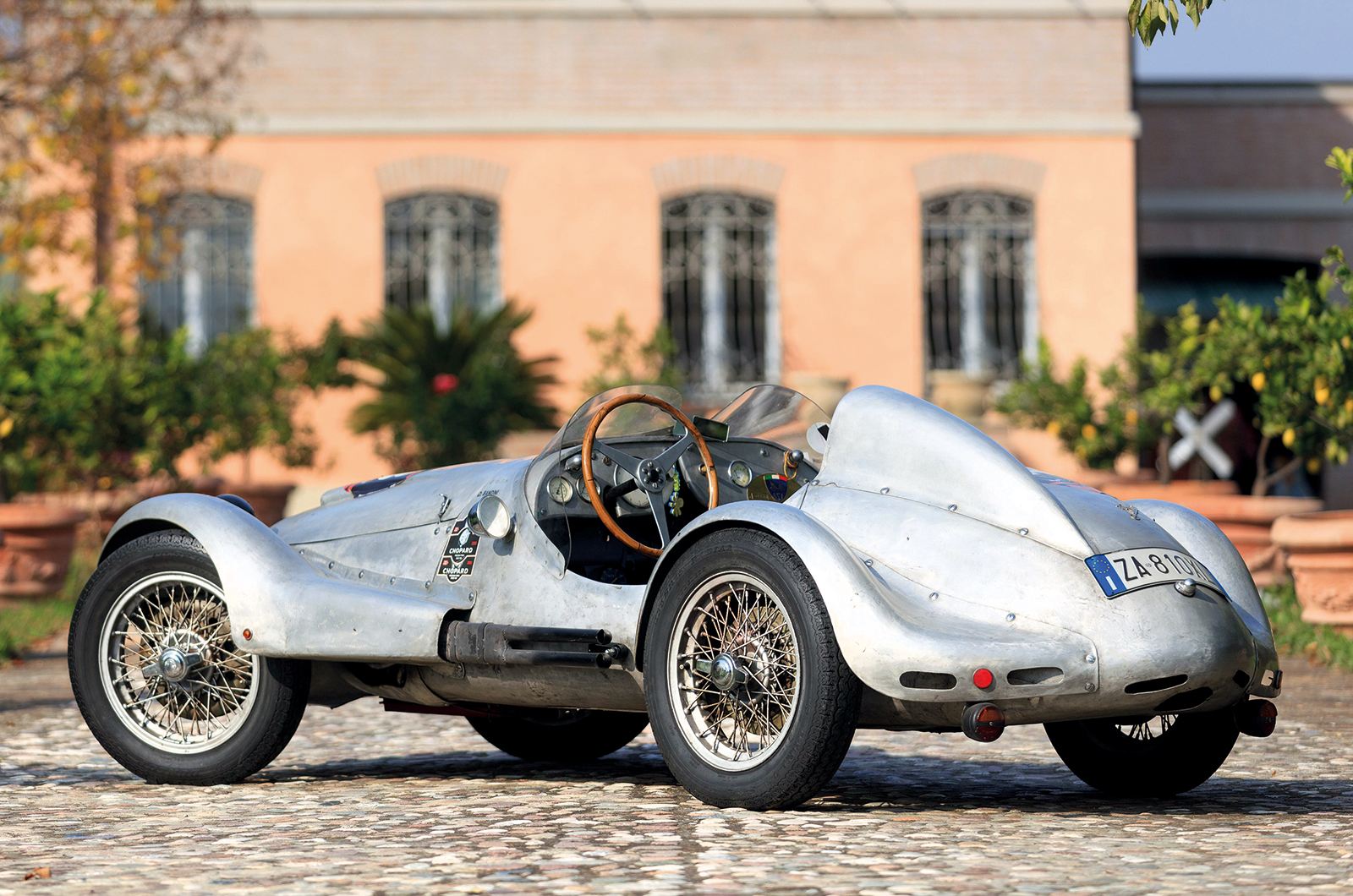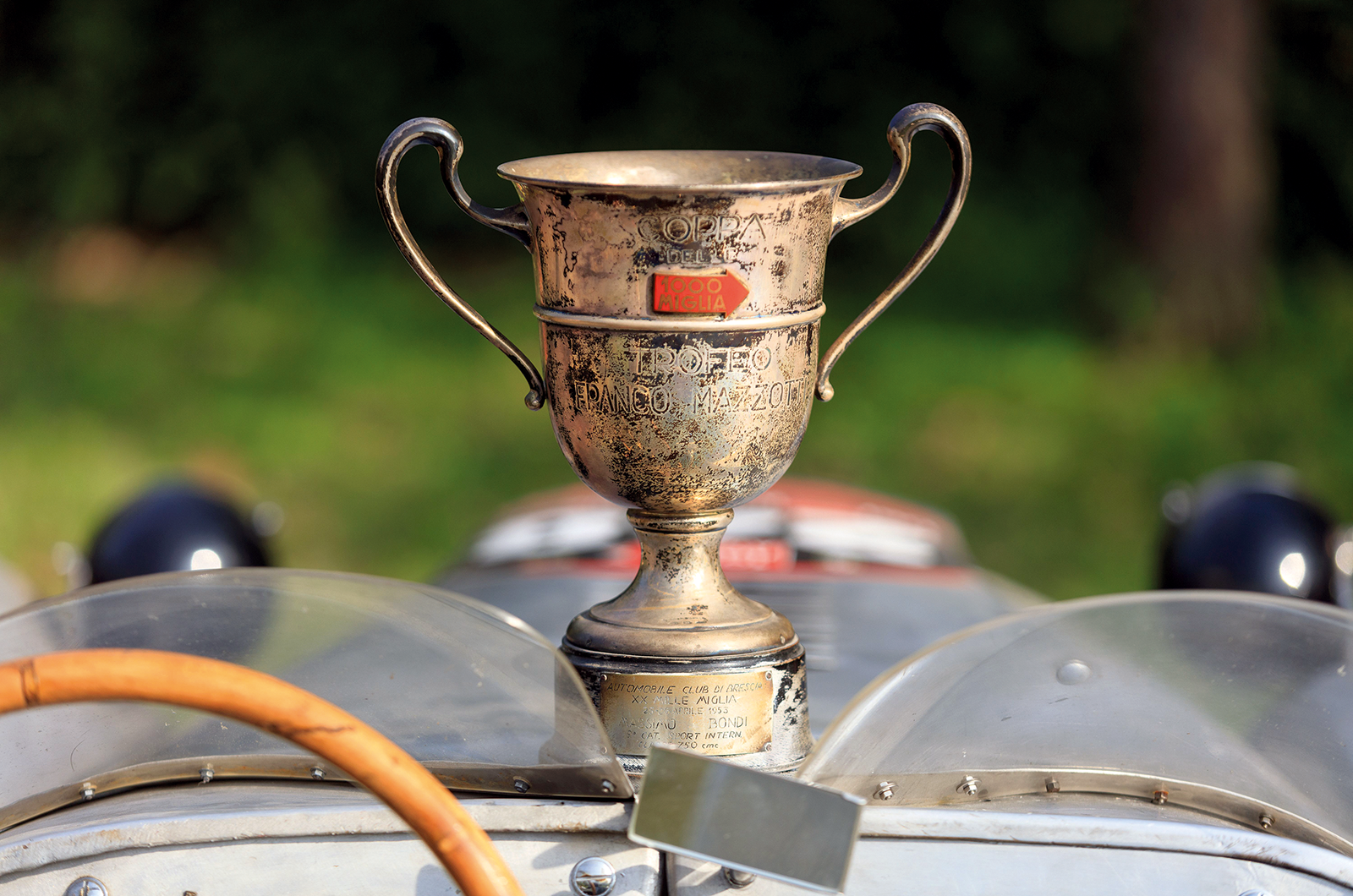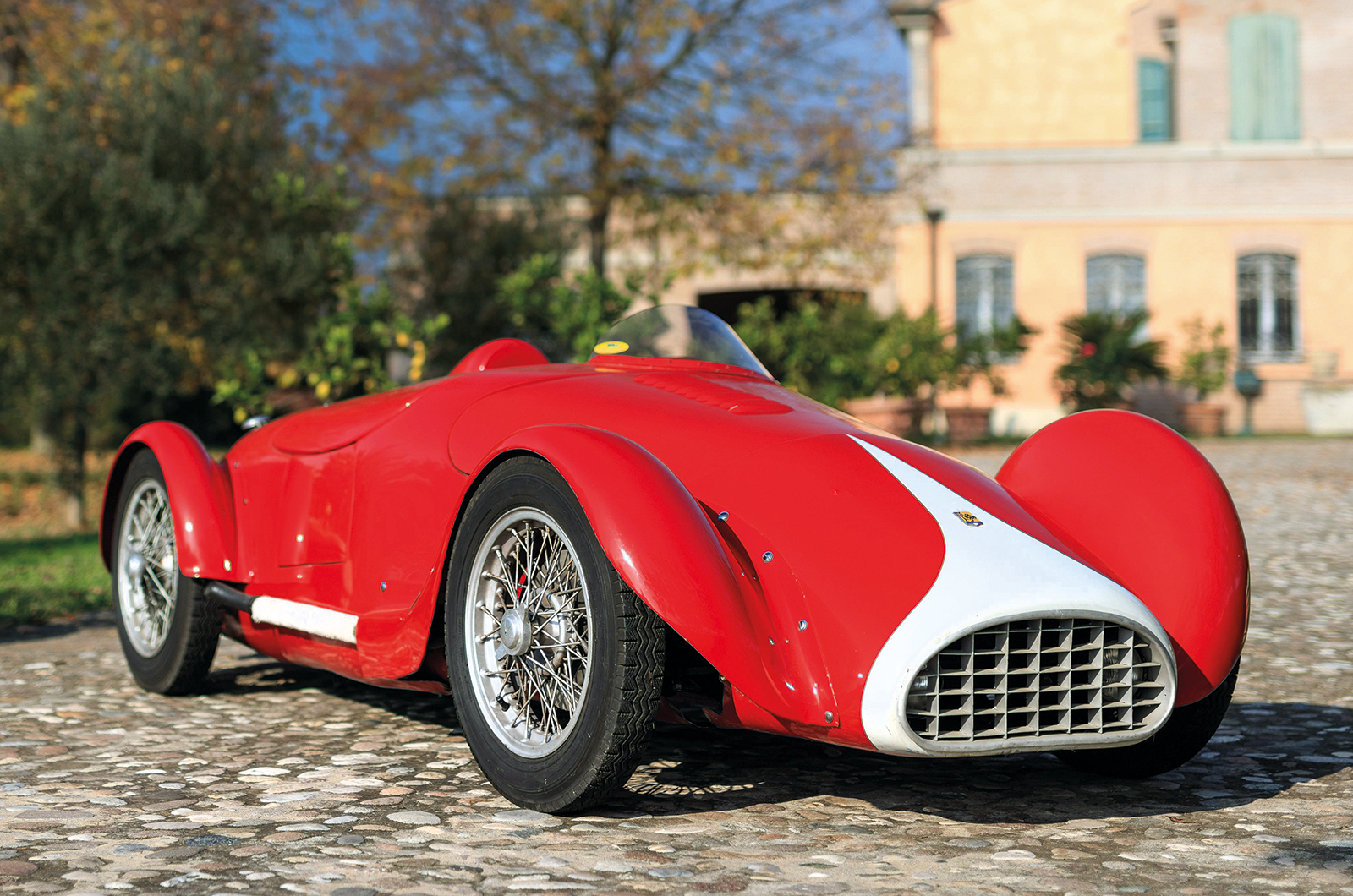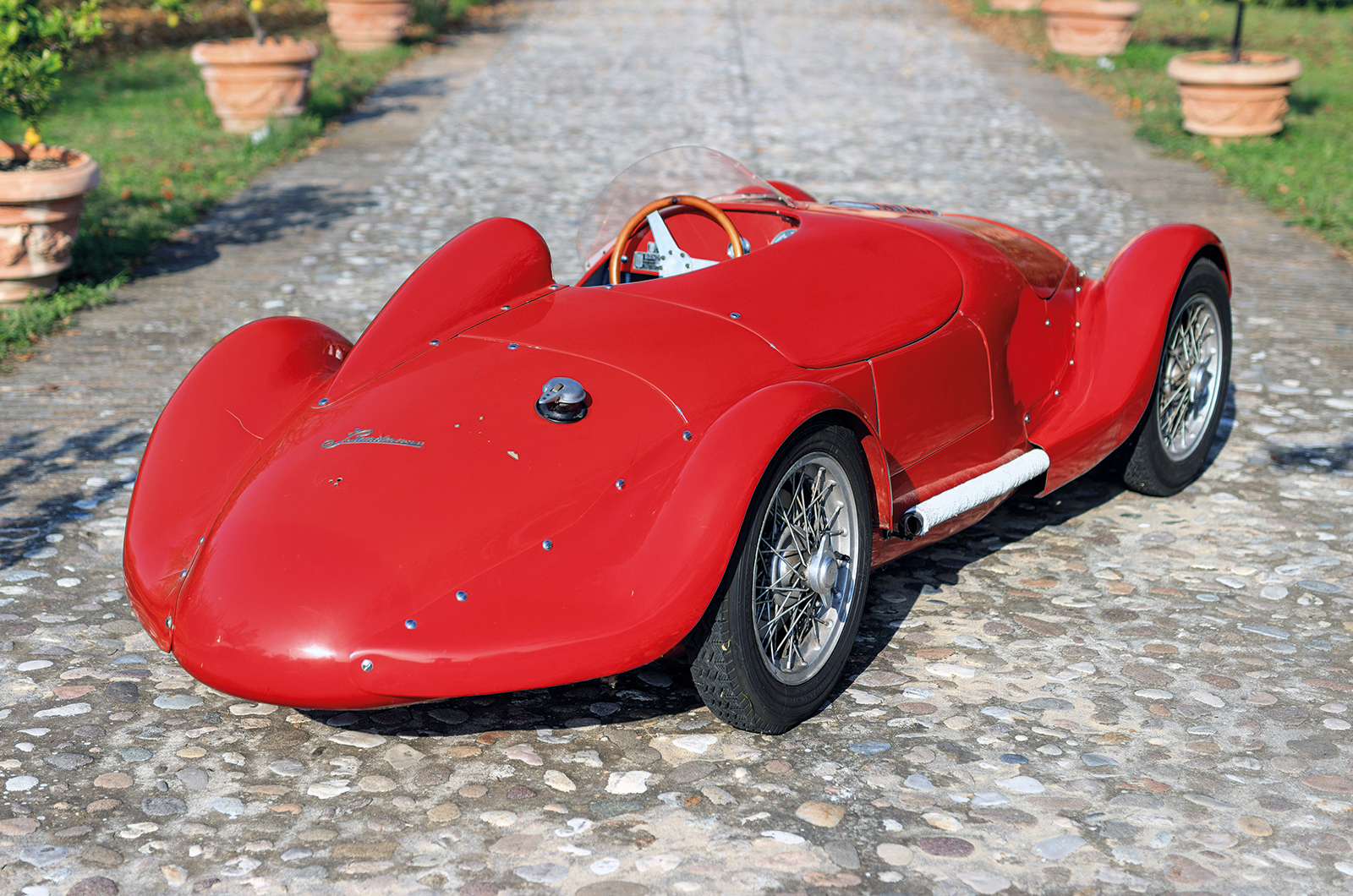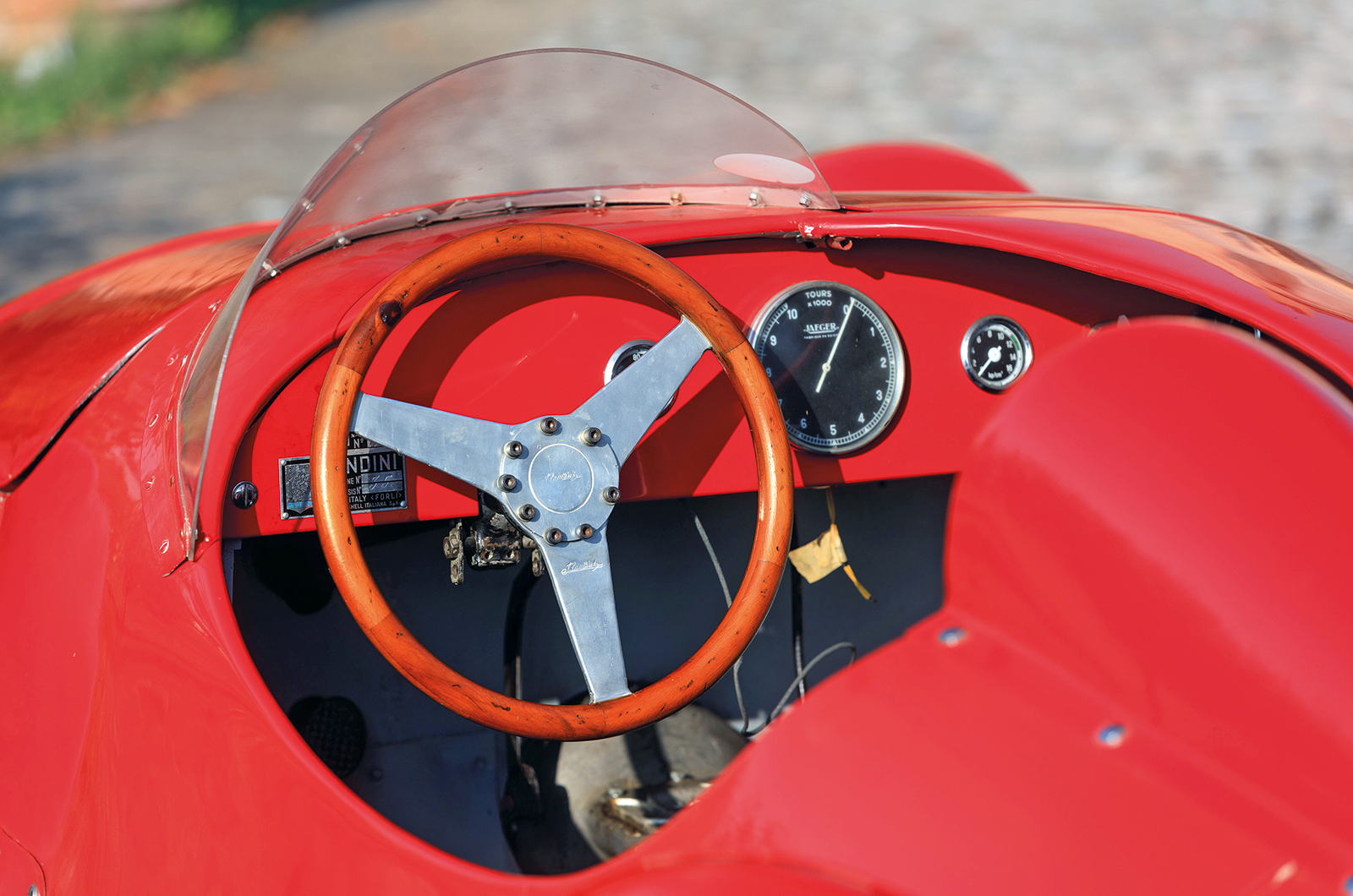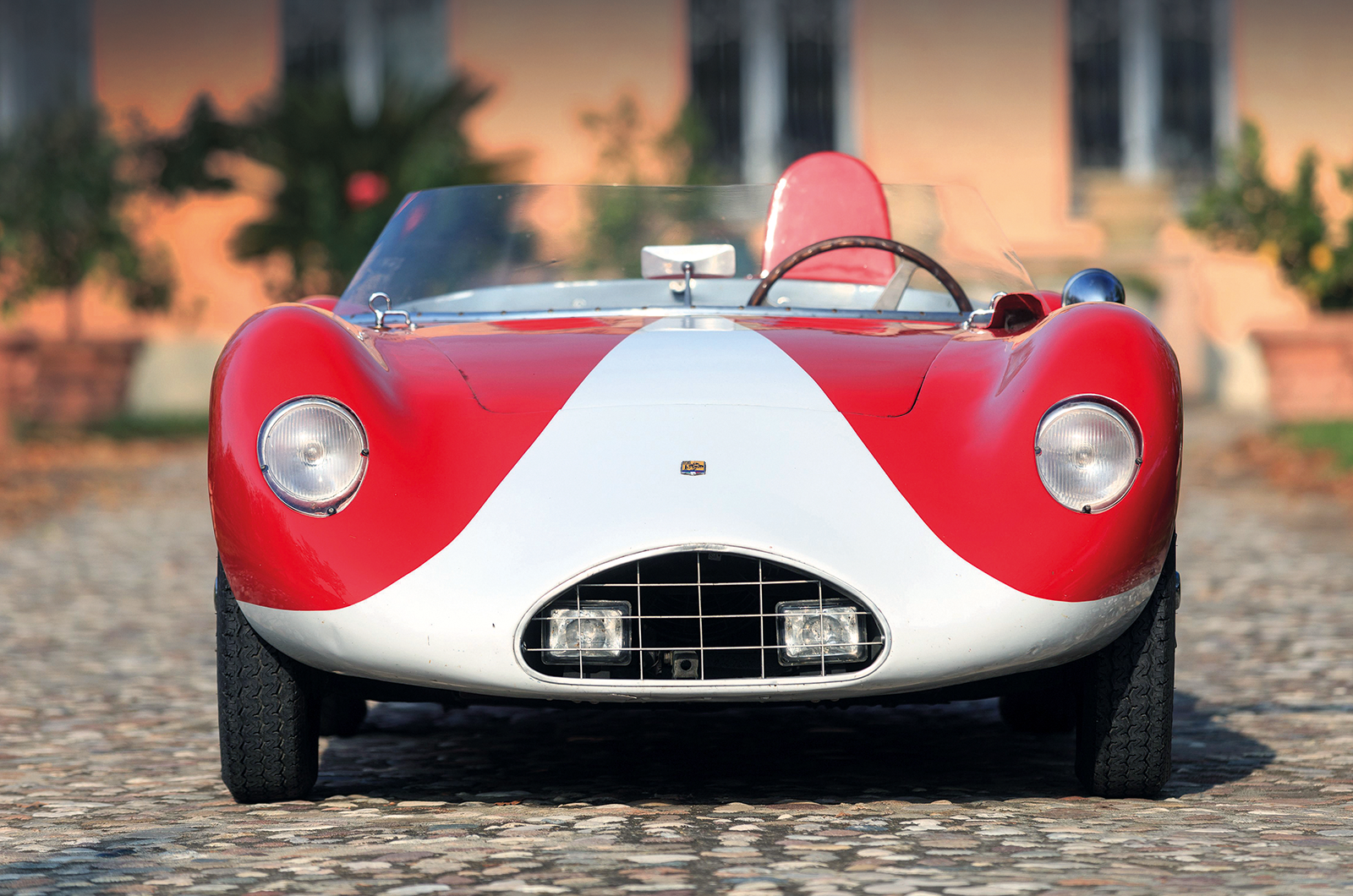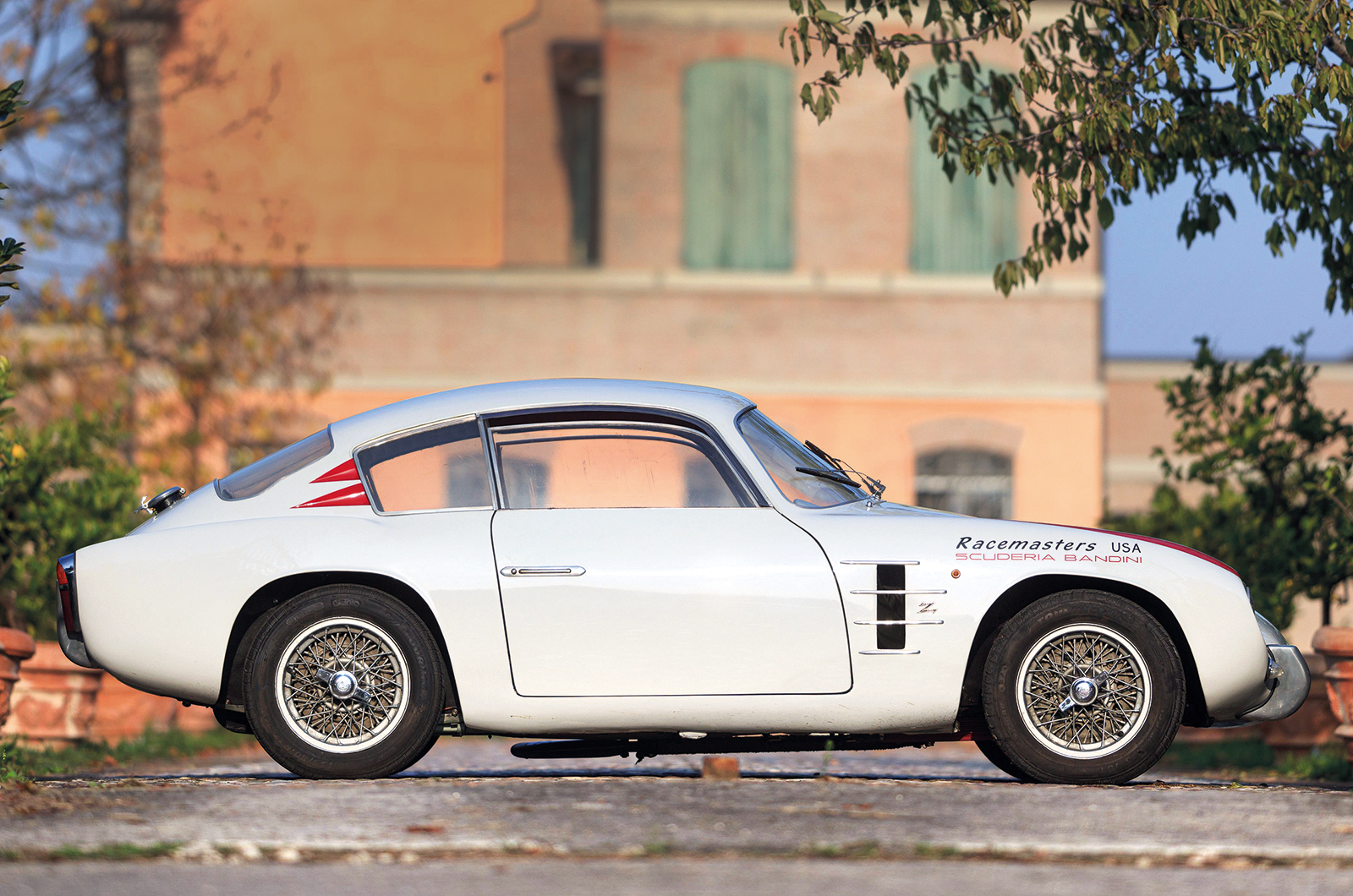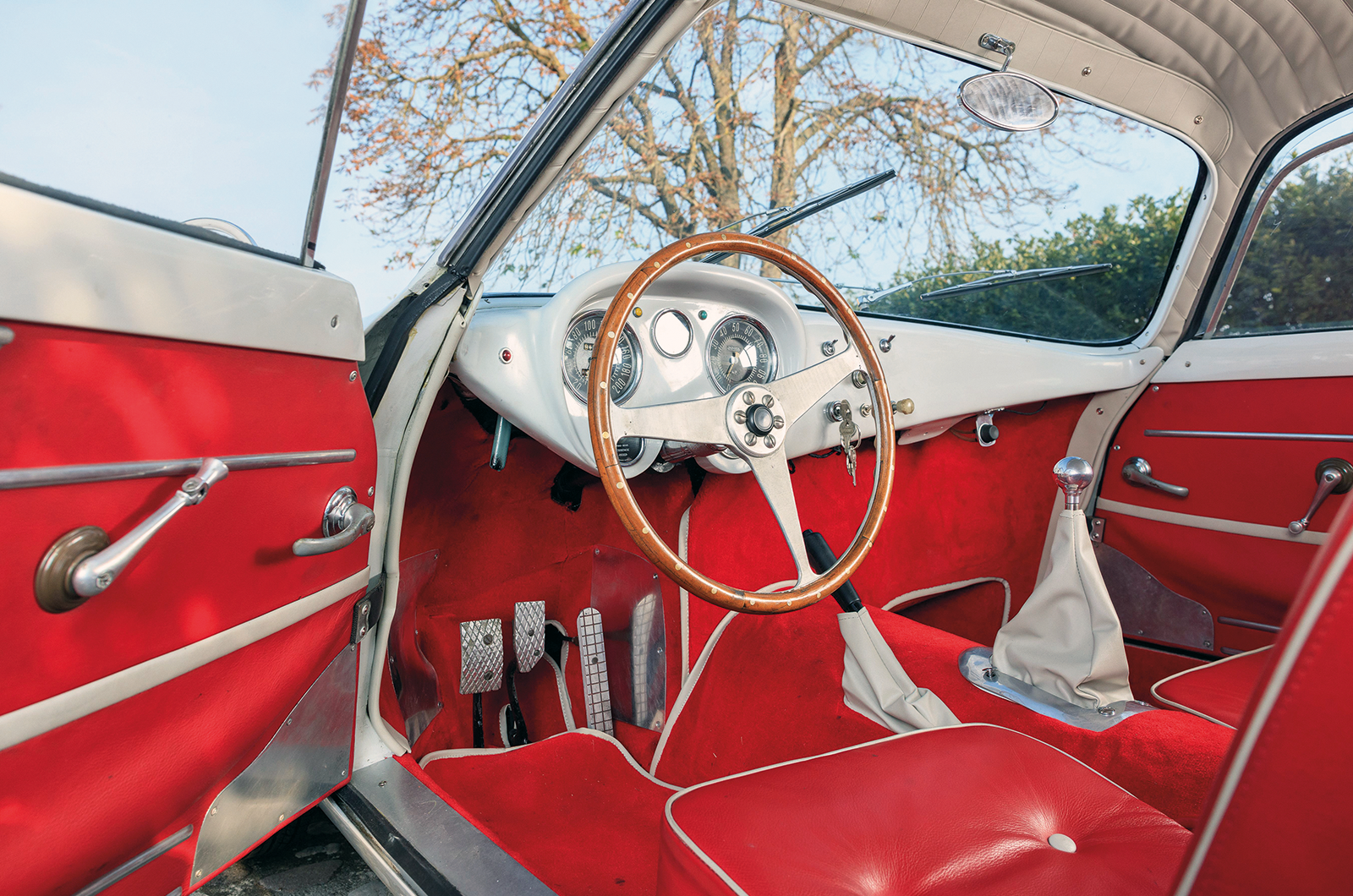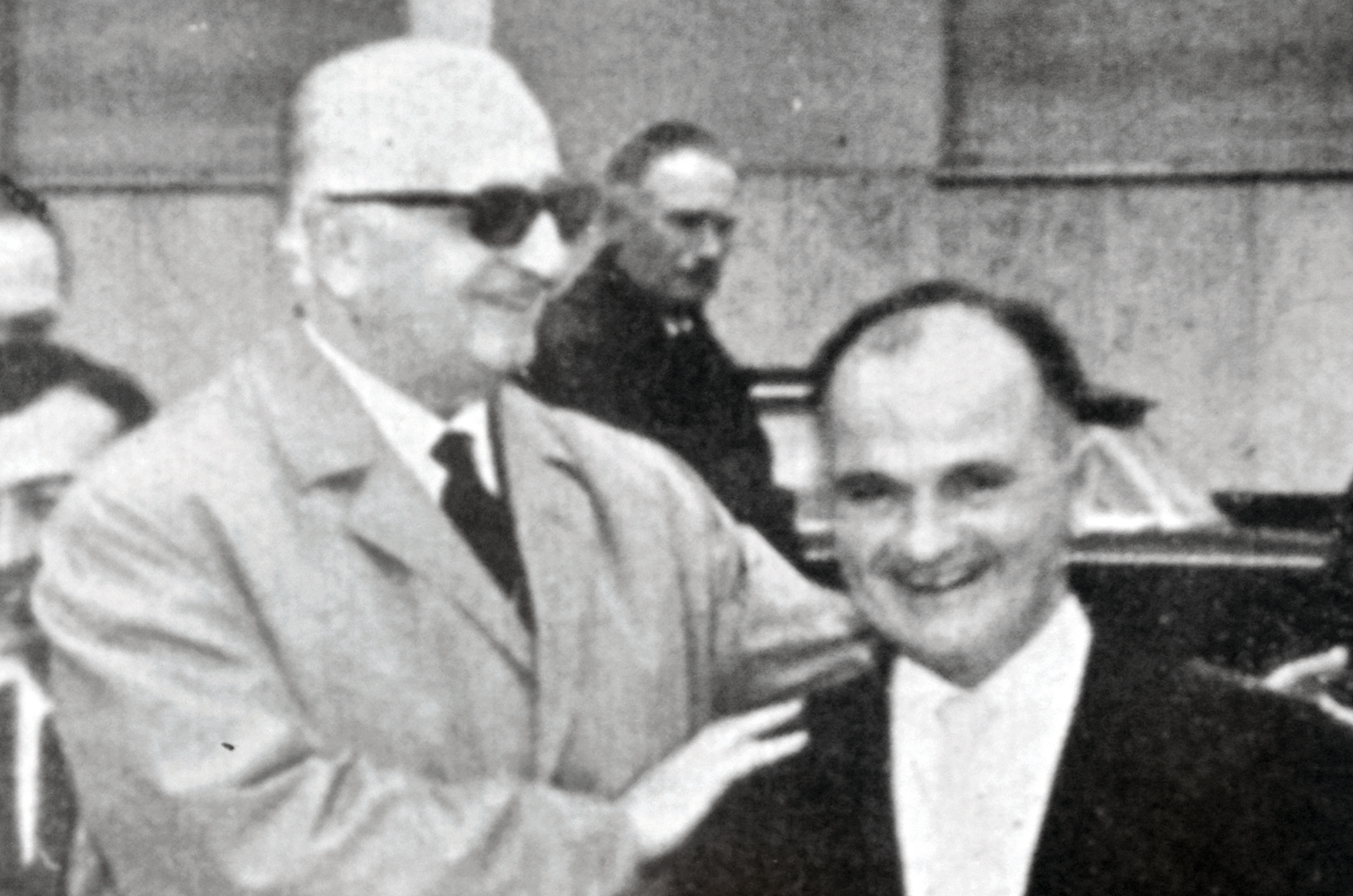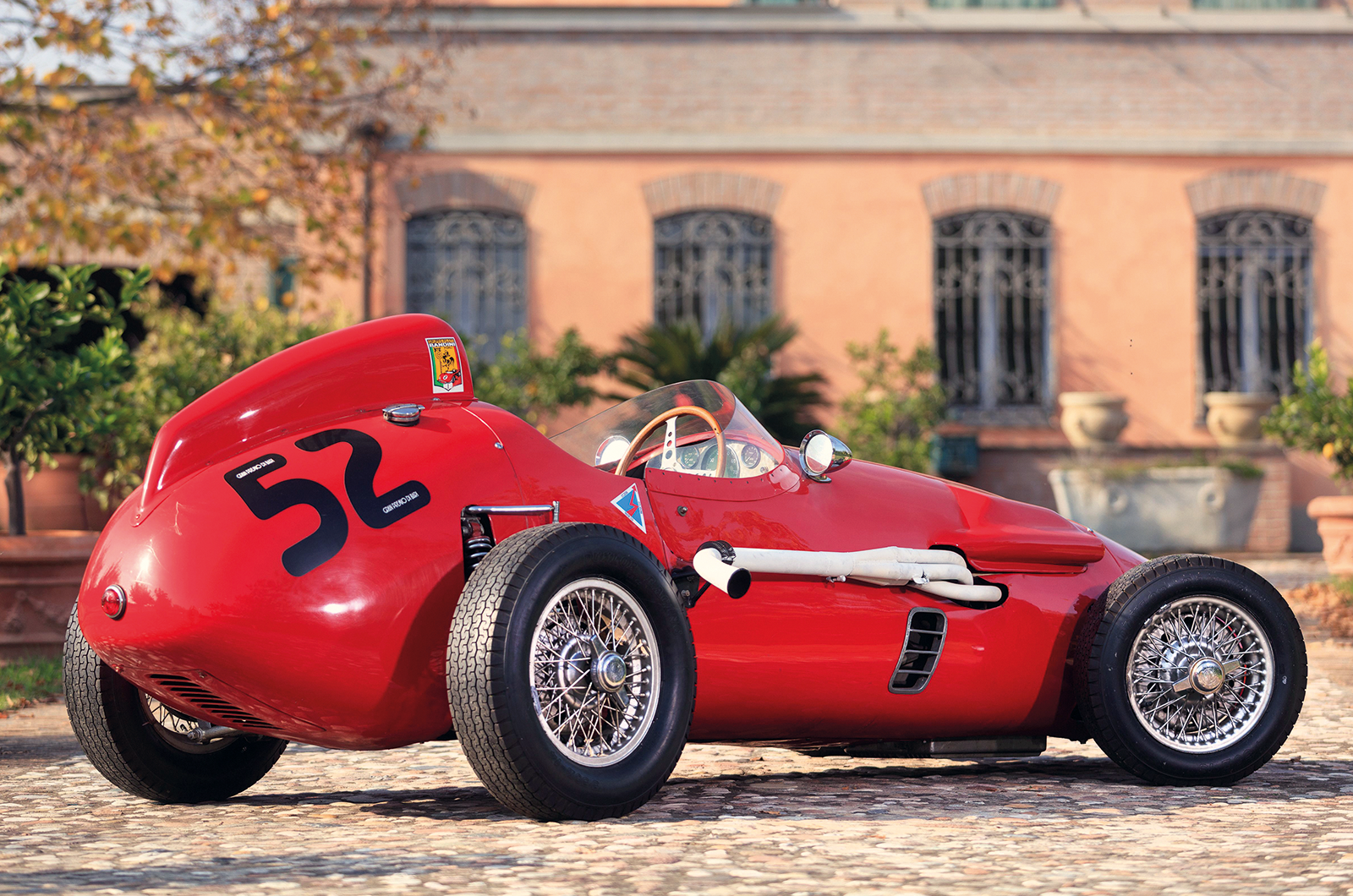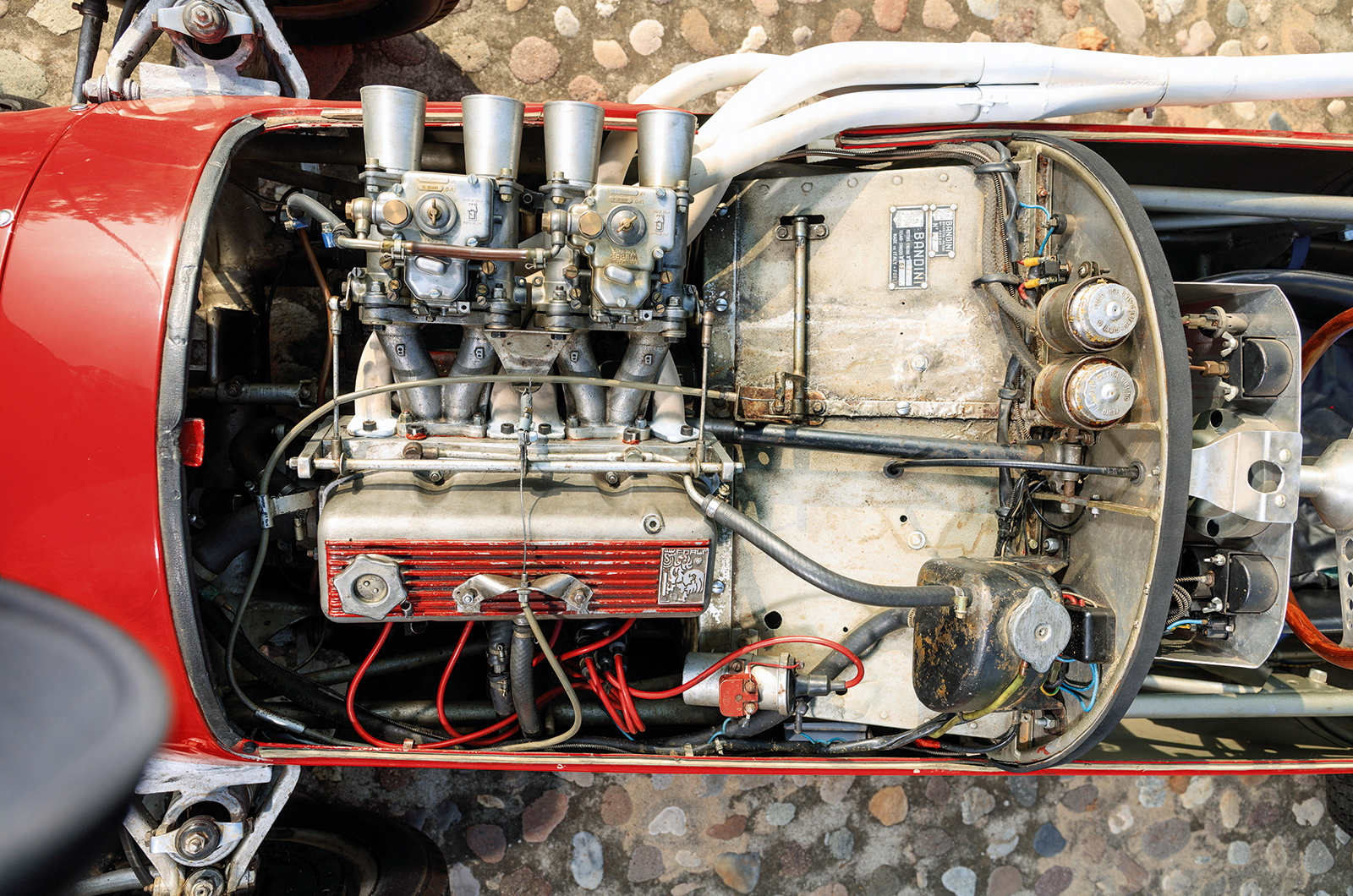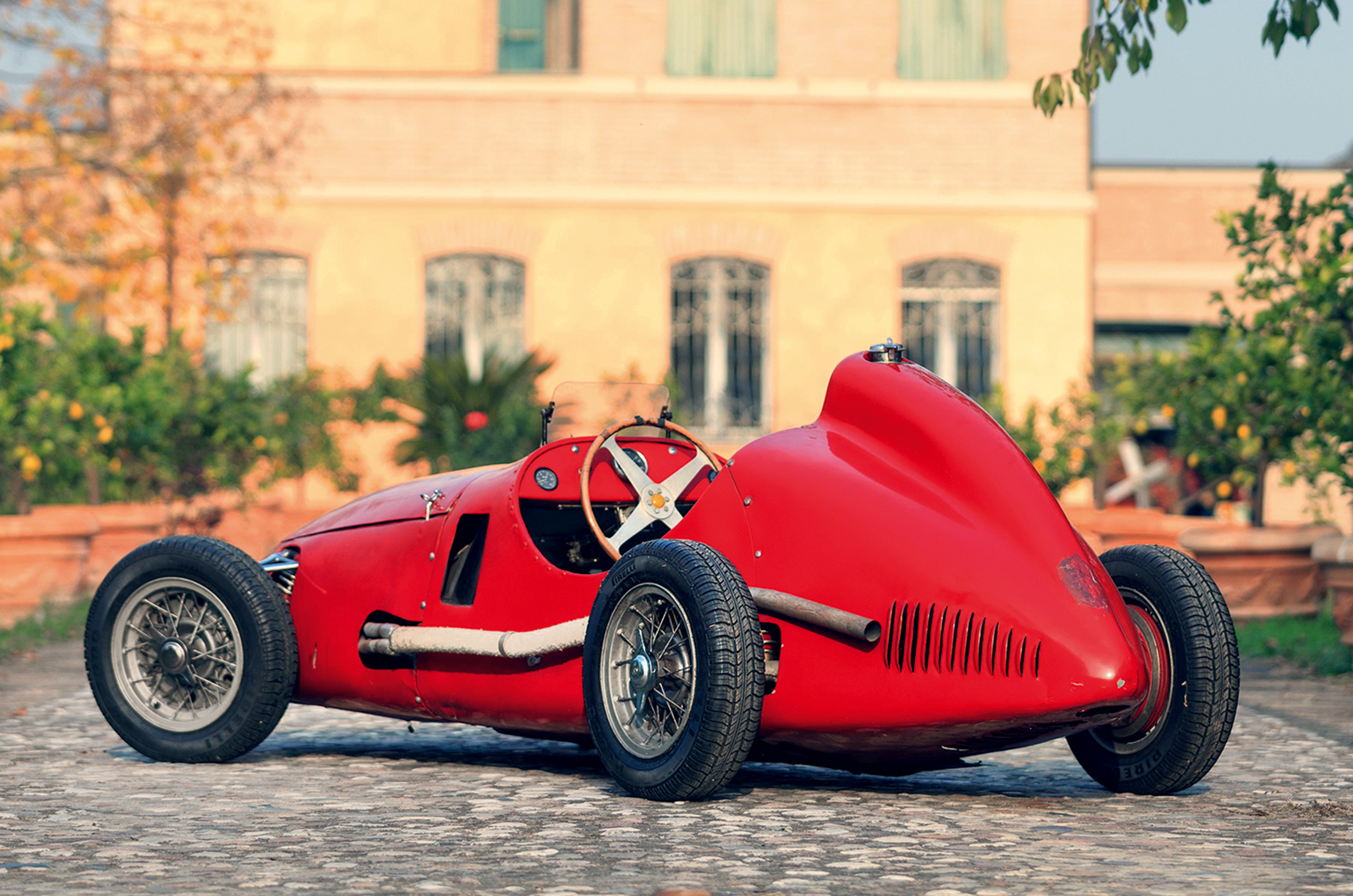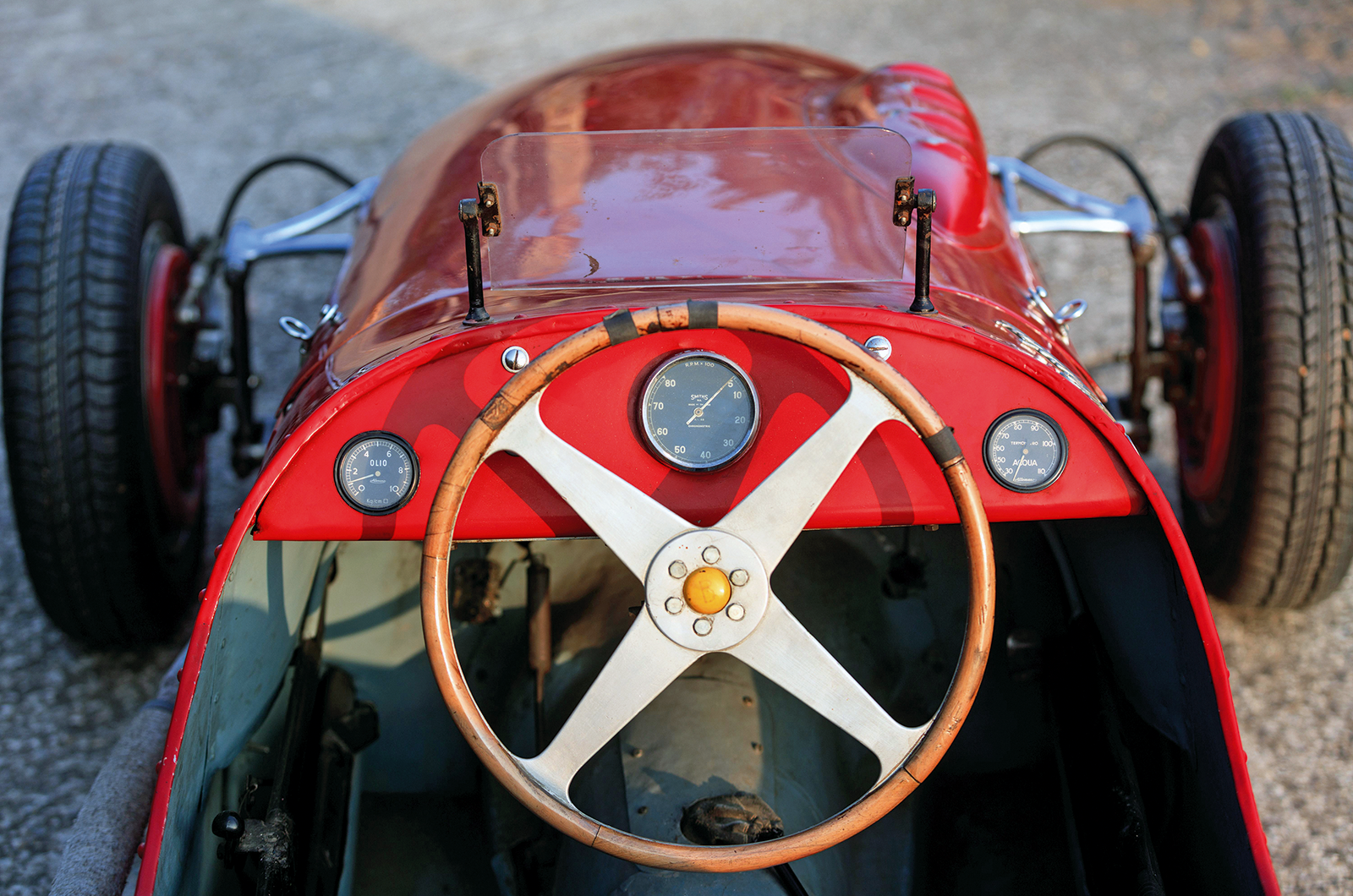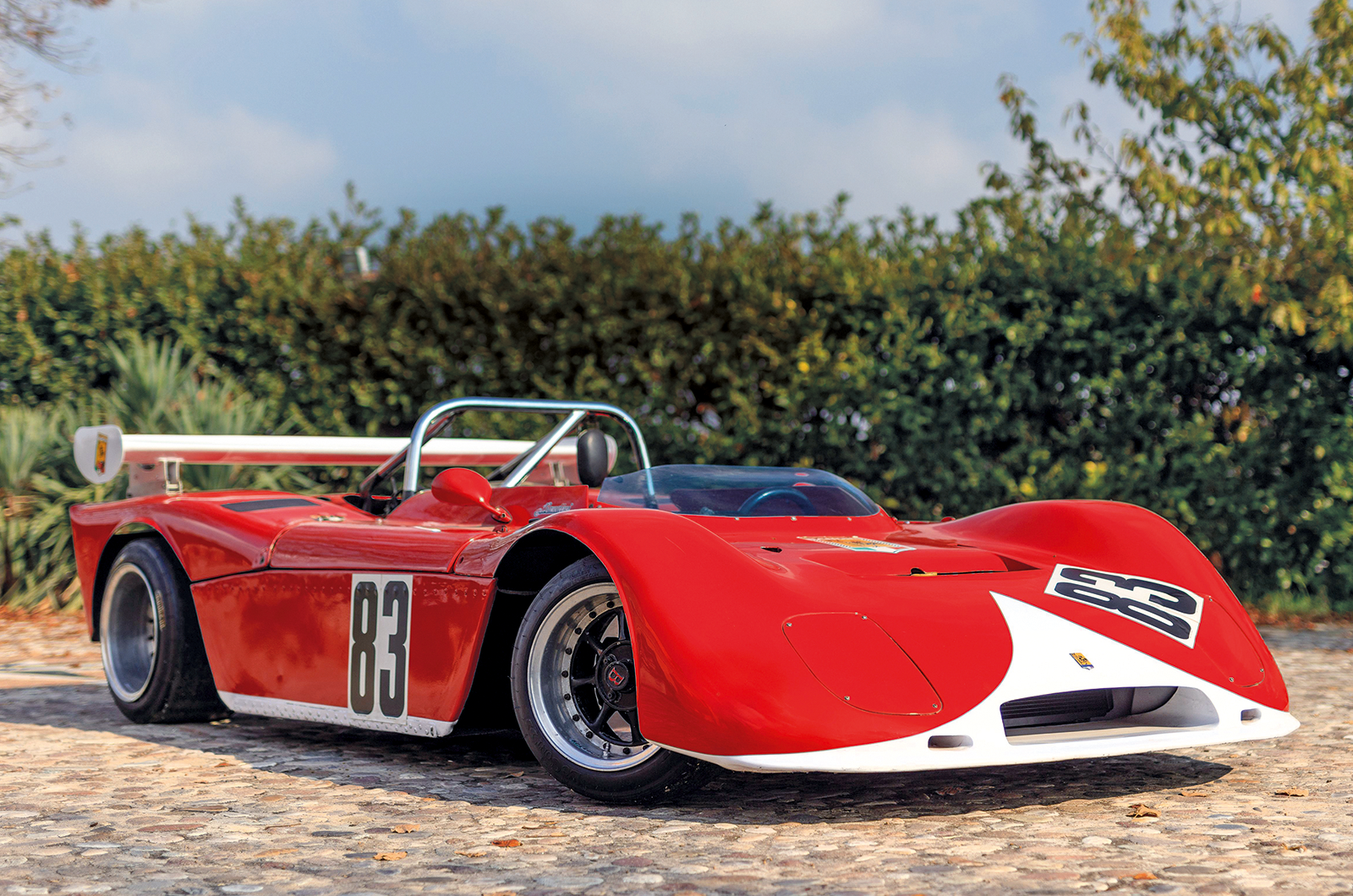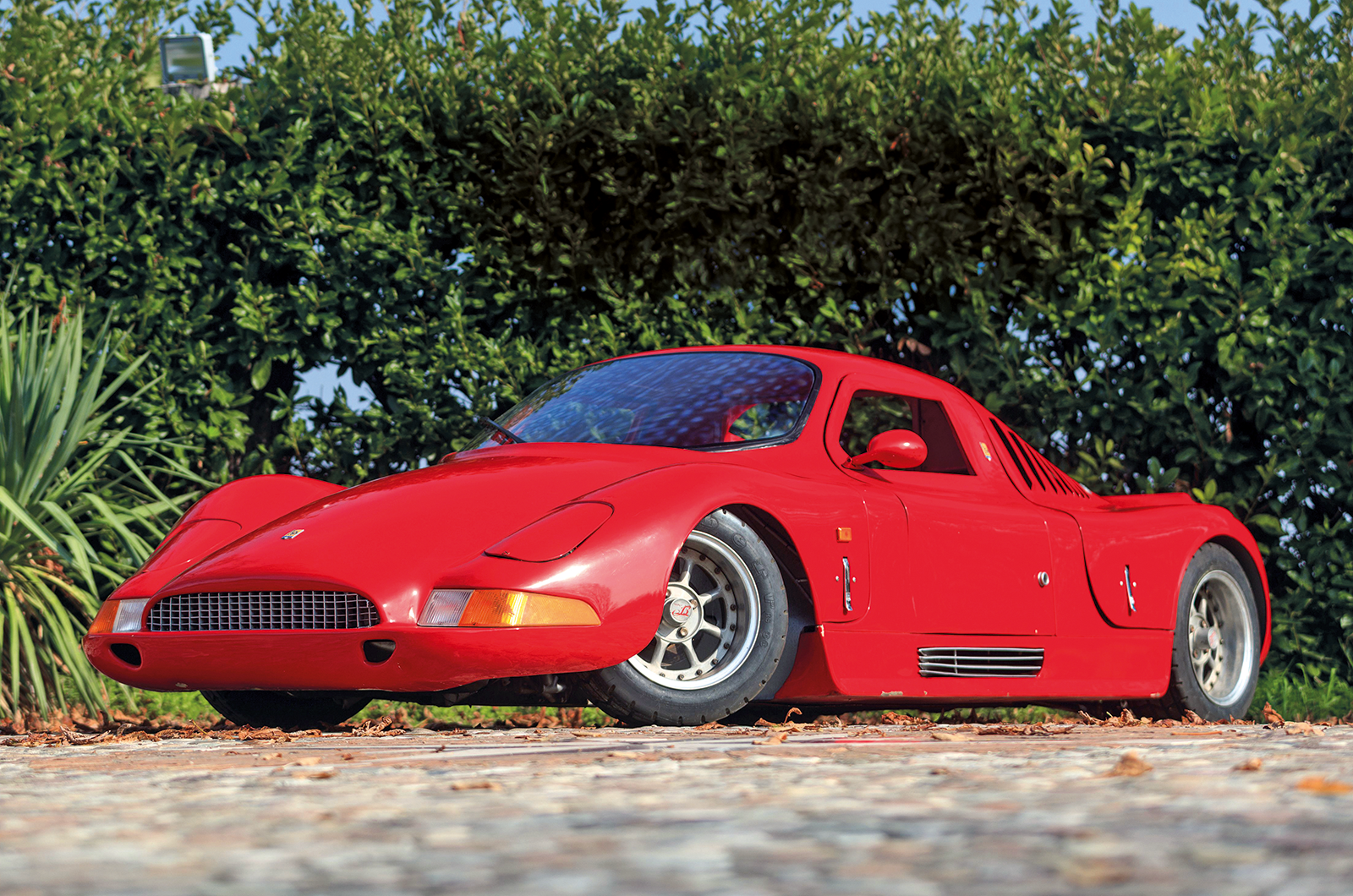As a model that is emblematic of the marque, it’s no surprise to find a 750 Sport Internazionale Saponetta as part of the collection.
“This car was in Massachusetts,” says Dino. “It was one of the two Saponettas that competed in – and retired from – the 1957 Mille Miglia, in the hands of Carlo Camisotti and Giovanni Sintoni.”
Bandini made nine Saponettas, all of which have survived: four are in Japan, two in the USA, one in The Netherlands and two in Italy.
The Formula Junior car was rendered obsolete by the rear-engined Coopers
The Saponetta was also available in 850cc and 1000cc versions, and Bandini was keen to explore other categories so in 1955 he developed a one-off 750 GT Zagato hardtop berlinetta.
Today, this unique coupé represents undoubtedly the most beautiful car in the museum.
“It was based on a 750 Siluro chassis and engine,” explains Dino.
“For the bodywork, my uncle installed a wooden crate in the bare frame and drove it by road to Zagato in Milan.”
Bandini’s Formula Junior car from 1960 with a modified Fiat 1100 motor
The famous carrozzeria produced a simple, fluid shape in aluminium, inspired by the ’54 Moretti 750: “My uncle was quite small so the car’s low roofline suited him perfectly, but soon after this car Zagato developed its famous ‘double-bubble’ roof to accommodate taller drivers.”
The GT’s elegance helped it land victory in the 1957 Rimini Concours d’Elegance before being exported to the USA, where it competed at Daytona, Sebring and Watkins Glen as part of the Racemasters equipe.
“When I found it in 1999, in Connecticut, it was in a very poor condition,” recalls Dino, “but it was mostly complete.”
The Bandini F3 single-seater is powered by the twin-cam Crosley 750 engine
“Over the following three years I had the body rebuilt and tracked down various missing parts such as the Marchal headlights, which are identical to those on the Ferrari 166 and which I unearthed in Imola,” he continues.
In parallel with his elegant two-seaters, Bandini developed a pair of front-engined single-seaters for use in Formula Three and Formula Junior.
The examples in Dino’s collection today were both found in Italy: a 1954 F3 machine with Crosley power, and a 1960 Formula Junior with a modified Fiat 1100 engine.
“This model fought against Stanguellinis and Volpinis, and today would be ideal for the Grand Prix de Monaco Historique,” says Dino.
The front wishbones were fashioned from bicycle forks
From the mid-’60s, however, regulations began to change in the United States and larger manufacturers entered the scene, pushing Bandini out of contention.
After the Saponetta, Ilario designed several competition models for his privateer customers, all produced in small quantities, such as the pretty 1000 GT coupé, the mid-engined 1000 P barchetta, the 1000 SP berlinetta and the 1300 P prototipo.
In 1954, he created the Gruppo Piloti Bandini to unite the marque’s drivers, which in 1962 led to an association with the Arcangeli team under the Scuderia Riunite Arcangeli-Bandini banner.
The Barchetta-style 1300 prototipo from 1980 was designed for hillclimbs
In a rare appearance outside Modena, Enzo Ferrari appeared at the team’s 1964 awards ceremony after being invited to speak, saying: “When I told my mother, who is 92 years old, that I was coming to Forli, she replied, ‘You will greet my city!’ It was in Forli she was born.”
“He was also friends with Bindo Maserati,” adds Dino, “and they sometimes helped each other out in competition.”
Ilario took the wheel in anger for the final time in 1985 on the Predappio Hill Climb, and passed away in 1992 while still putting the finishing touches to his 1000 Turbo berlinetta.
This forward-thinking machine featured a mid-mounted, Bandini-designed powerplant, this time with forced induction and dry-sump lubrication, but if anything the rather baroque body is even more surprising, with its cabin placed dead centre between pouting grille and rounded rump.
The spartan interior, with its flattened steering wheel, confirms the car’s resolutely sporting focus.
The mid-mounted 16-valve engine was entirely Ilario Bandini’s work
The two youngest cars in the collection were easier to find, Ilario having kept the mid-engined 1980 1300 prototipo and the 1000 Turbo berlinetta that he was working on at the time of his death.
“The prototipo was powered by a twin-cam, 16-valve, fuel-injected engine that was 100% Bandini’s work,” explains Dino.
“It was designed for hillclimbing and was the last car in which Ilario competed.”
The quirky 1000 Turbo berlinetta features a stripped-out interior and mid-mounted turbocharged ‘four’
Dino Bandini’s mission to acquire an example of each important model and compile a register of surviving cars turned into a life’s work.
“My uncle was a mechanical genius,” laments Dino, “but very bad at business. He wasn’t interested in money and didn’t have a dime at the end of his life.
“I was aware of some misinformation about his cars, and I wanted to make it all clear.
“Out of a total of 75 cars built, I found traces of 47 survivors.”
‘These machines bear witness to a period of Italian sporting success from the 1950s to the ’70s, when passion overcame the sacrifices that needed to be made to create the purest machines’
In the early, pre-internet days, Bandini began contacting all of the sports and racing-car dealers he could find in the classic press, particularly in the USA: “I sent them faxes, explaining what I was looking for, and little by little I began to track down the cars.”
Now, having secured his uncle’s history with his museum, the register and contributing to a comprehensive book – not to mention participating in the Mille Miglia five times – Dino Bandini has decided to turn the page, and his own legacy went under the hammer with Artcurial in March 2022.
These machines bear witness to a period of Italian sporting success from the 1950s to the ’70s, when passion overcame the sacrifices that needed to be made to create the purest machines, whose simplicity, lightness and ingenuity all served a single purpose: to win.
Words: Serge Cordey
Images: Peter Singhof/Artcurial/Dino Bandini Archive
Thanks to: Artcurial, which sold Dino Bandini’s collection at its Rétromobile auction in Paris in March 2022
READ MORE
Maserati 300S: in Fangio’s footsteps
Garage greatness: a homemade ode to a golden Grand Prix era
Flyweight battle: Lotus Exige vs Noble M12
